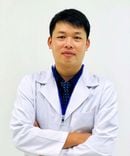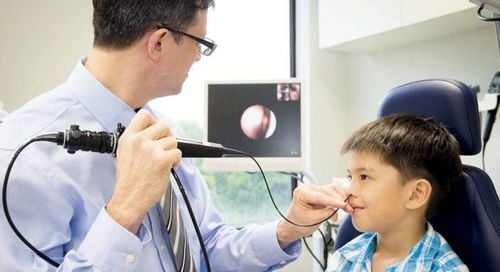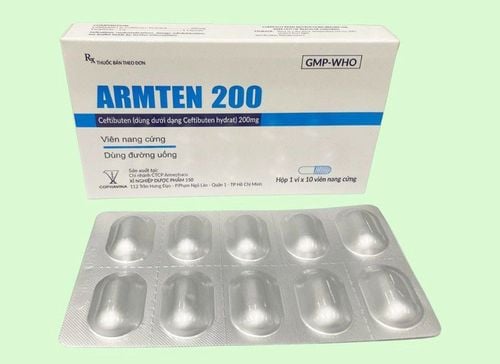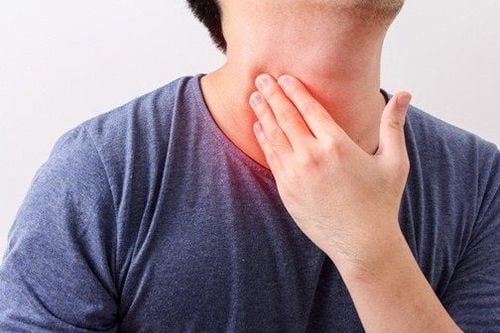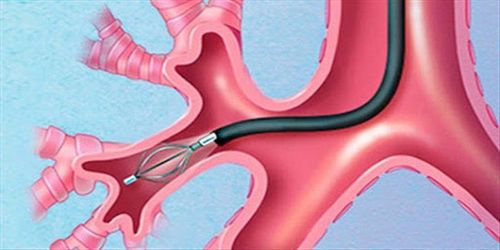This is an automatically translated article.
The article is professionally consulted by Master, Doctor Nguyen Nam Phong - Pediatrician - Department of Pediatrics - Neonatology, Vinmec Phu Quoc International General HospitalOtolaryngoscopy is a method to help diagnose and treat diseases of the ear, nose and throat. Early detection and timely treatment will radically improve the condition of the disease and ensure the quality of life for children.
1. What is ENT?
Otolaryngoscopy is a technique used to examine the ears, nose, sinuses, and throat. During an ENT procedure, your doctor will use a thin, flexible endoscope with a small camera and light on the end.During the procedure, the doctor will insert the endoscope into the ear, nose and throat and observe the health status of these positions through the electronic screen.
2. When is an ENT endoscopy indicated for the baby?
Otolaryngoscopy is a non-invasive technique that does not affect children, so the indications are quite wide. In all cases when parents want to check their baby's ears, nose and throat, endoscopy can be indicated. However, it should be noted about the discomfort during the procedure and the need for the cooperation and cooperation of the family so that the endoscopy can take place smoothly. Some specific indications:
Trẻ sẽ được chỉ đinh nội soi mũi nếu có các triệu chứng về xoang như đau mặt, nghẹt mũi,...
Children have symptoms of sinus disease such as: facial pain, decreased sense of smell or nasal congestion or congestion. Assess response to medical therapy in children with symptoms such as purulent discharge, inflammation, and mucosal edema or treat polyps with antibiotics, antihistamines, oral steroids, or topical steroids. Assess children at risk for complications or who have had complications from sinusitis. Dissection and removal of mucus, crust, and fibrin from blocked sinuses and nasal cavity after Functional Endoscopic Sinus Surgery (FESS). Evaluation of the possibility of disease recurrence after functional Endoscopic Sinus Surgery (FESS). Assess the nasopharynx for Eustachian tube problems, lymphatic hyperplasia, and nasal obstruction. Evaluate and take biopsies of lesions or tumors in the nose. Assess for loss of smell or hypoxia. Assess for cerebrospinal fluid (CSF) leaks. Evaluation and treatment of nosebleeds. 2.2 Otoscopy The following are reasons why a child should visit an ear and may need an otoscope:
Ear infections in children with speech delay Persistent fluid in the ear (more than 3 months) Rupture of the ear drum during an ear infection infections Ear infections requiring multiple antibiotics 2.3 Throat endoscopy Frequent absences from school due to sore throat or sinus infection. Hoarseness, persistent cough, or shortness of breath. Subjects with a history of ear - nose - throat diseases or deformities in the ears, nose or in the bone cavities.
3. Notes to prevent and limit complications during endoscopy
For young children, especially children under 5 years old, there is a need for coordination and cooperation between the child's family members (father, mother, relatives...). Parents or family members accompanying the baby, need to explain fully and clearly so that the children can prepare psychologically and encourage the baby to cooperate with the doctor more during the endoscopy.4. Endoscopic procedure otorhinolaryngology
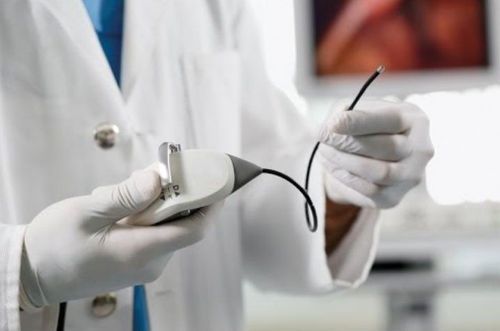
Thời gian nội soi tai mũi họng thường chỉ khoảng 5 đến 10 phút, rất ít xảy ra tai biến nghiêm trọng khi thực hiện
4.2 Nasal endoscopy Posture: Patient tilts head back 15 degrees. The doctor will place a cotton swab soaked in a vasoconstrictor and local anesthetic into the patient's nose for about 5 minutes.
4.3 Throat endoscopy Posture: Patient sits upright, legs relaxed. The doctor will insert the endoscope into the pharynx, on the surface of the tongue, from the outside to the inside to observe the positions on the surface of the tongue, observe the uvula, isthmus, 2 tonsils, the bottom of the tongue, and the bayonetula on both sides. , glottis, funnel cartilage, and vocal cords.
The time for otolaryngoscopy is usually only about 5 to 10 minutes, there are very few serious complications when performed. This is considered a modern imaging method, providing clear images to help doctors assess the pathology as well as damage to the ear, nose and throat area.
Currently, Vinmec International General Hospital has applied ENT technique in examination, diagnosis and treatment of diseases. The ENT procedure at Vinmec is carried out methodically and according to the standards of the procedure by a team of highly skilled medical doctors, modern and standard machinery system. Thanks to that, the results are accurate, contributing significantly to the identification of the disease and the stage of the disease.
